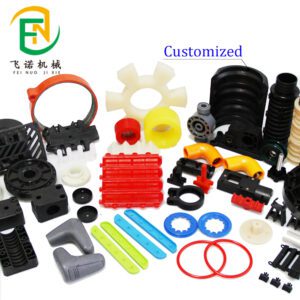Showing the single result
Contact Us
FeiNuo specializes in extruding, injection molding and machining ultra high-performance plastics. Our track record of successful application solutions with these materials spans more than two decades. Virtually all of what we do today in these materials originated with customers seeking solutions that others could not deliver or were unwilling to pursue.
What is a high-performance plastic?
Strength and durability: Many plastics are engineered (fiber reinforced) to be extremely strong and durable, with high tensile strength and resistance to wear, tear, and impact. This can make them well-suited for applications where mechanical stress is a concern. Examples include Torlon PAI and PEEK.
Temperature resistance: Certain plastics are highly resistant to chemical corrosion or degradation, which can make them ideal for use in harsh environments or with corrosive substances. Examples include fluoropolymers such as PFA with a melting point of 581 degrees F.
Electrical properties: Some plastics have excellent electrical insulation properties, making them ideal for use in electronics or other electrical applications. Examples include fluoropolymers such as FEP.
Lightweight: Many plastics are lightweight, which can make them ideal for applications where weight is a concern, such as the aerospace, medical, or industrial markets.
Versatility: Plastics can be easily injection molded into a wide variety of complex shapes and sizes, which can make them versatile and useful in a wide range of applications.
Challenges and Limitations of High Performance Plastics
High performance plastics also have some challenges and limitations that have weighed them before use. Some of the challenges and limitations of high performance plastics are:
High cost: High performance plastics have a higher production cost than conventional plastics due to their complex synthesis, processing, and testing methods. They also have a higher market price due to their limited availability and demand. For example, PEEK can cost up to 100 times more than polyethylene.
Processing difficulties: High performance plastics have a higher processing temperature and pressure than conventional plastics due to their high melting point and viscosity. They also require special equipment, additives, and techniques for optimal properties and performance. For example, PTFE requires sintering at 370 °C under pressure to form solid shapes.
Environmental impact: High performance plastics have a higher environmental impact than conventional plastics due to their non-biodegradability and non-recyclability. They also generate more greenhouse gas emissions and toxic wastes during production and disposal. For example, PBI produces nitrogen oxides and hydrogen cyanide when burned.

